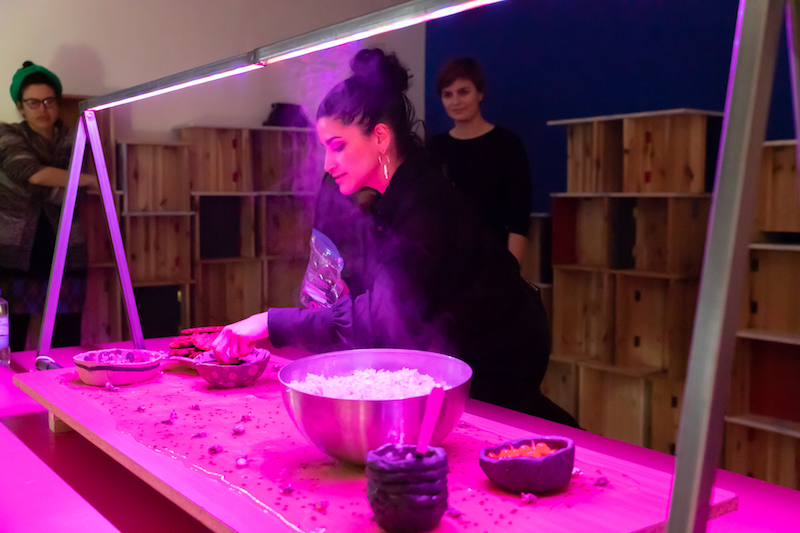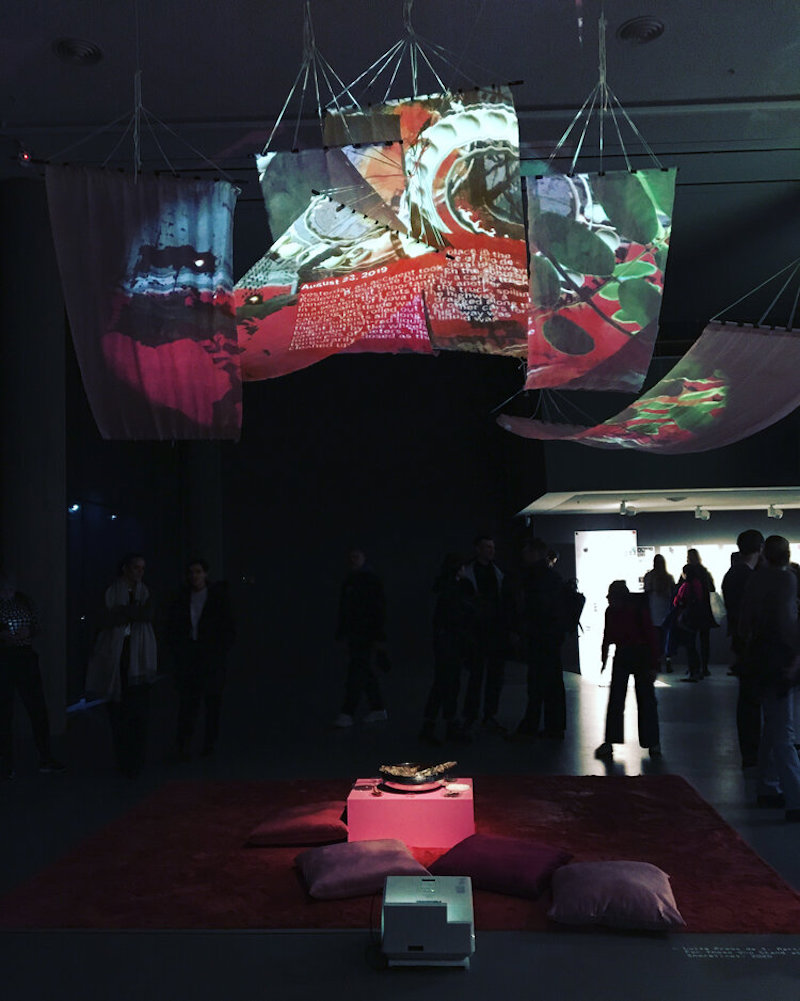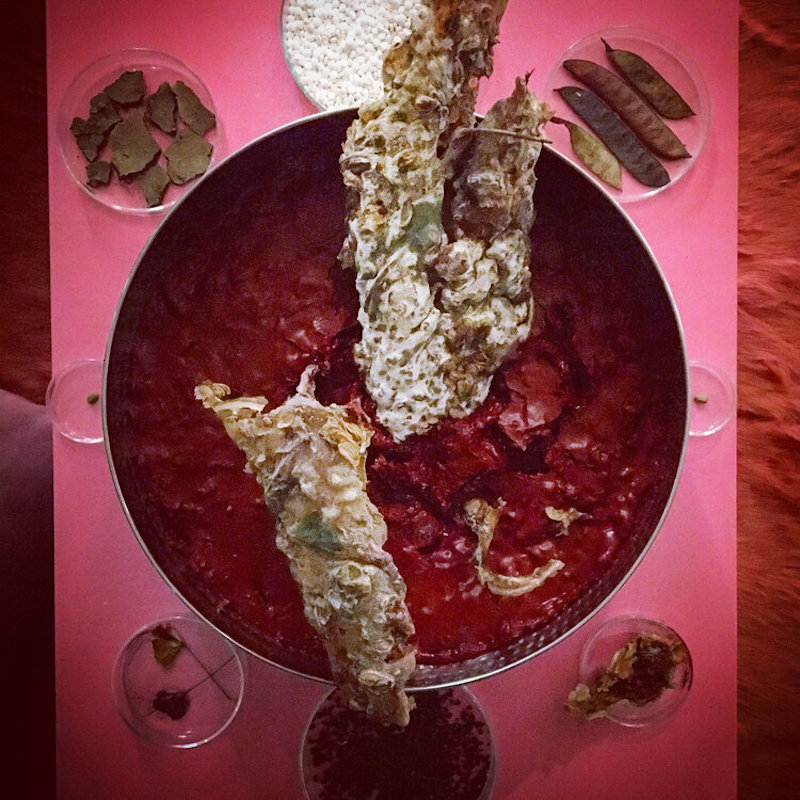Interview by Benjamin Busch // Aug. 07, 2020
Examining themes around fertility, reproduction, coloniality, gender and race, Luiza Prado de O. Martins’ artistic and research practice urgently critiques the biopolitical structures that underpin everyday life. Amid the coronavirus pandemic, the violence that these structures represent becomes evermore palpable. Populations and data points crash against the reality of daily struggle exacerbated by the pandemic, particularly in the postcolonial context. Weaving complex histories and undertold narratives, Prado’s work bridges the gap between theory and practice, acknowledging that institutional critique begins with personal experience. We spoke about her approach, use of different media and formats, her upcoming work for the Istanbul Biennial and the asymmetry of biopower, exemplified by the ongoing health crisis and antiracist demonstrations.

Luiza Prado de O. Martins, portrait // Courtesy of the artist
Benjamin Busch: In your work, you critique different biopolitical institutions. How does your practice function more generally as a form of intersectional institutional critique?
Luiza Prado de O. Martins: I can’t really separate my practice from my research. I think they really feed off each other in a very organic way. And, for the past few years, I’ve been engaging with questions related to birth control and fertility. It stemmed initially from my research into gender and coloniality, the relationship between the construction of gender and the maintenance of colonial structures of power. That, of course, goes into biopolitics, into the control of bodies that are gendered and racialized. That’s how I became interested in questions related to biopolitics, fertility and so on.
In my work—the general framework of my research and my practice—I’m interested in tapping into certain technologies that are so present in our everyday lives, things like the birth control pill or even the structures around the right to abortion or access to birth control. It’s not only the technology, right? It’s also access and distribution; how they are profoundly connected; how this emerges as both a reflection and perpetuation of colonial structures of power. In emerging like that, in being structured like that, they project those structures of power toward the future. So, in understanding how they’re articulated, we can also then be able to shift things around, and question that, and change what is going to be in the future. That, for me, is something that’s very central.
Initially, as part of my PhD research, I was looking into those profoundly violent structures. Eventually it became exhausting, to be honest. So, for the past couple of years, after I finished my PhD, I really started focusing more on my artistic practice. I was very interested in also looking into how people have always worked toward dismantling that, which has never existed without resistance. People have always resisted, and that’s how I ended up looking into things like herbalist practices, plants and so on.

Luiza Prado: ‘Between the Beginning of Sense and the Chaos of Feeling: A Multispecies Banquet,’ 2019-ongoing // Courtesy The Institute for Endotic Research
BB: Your work layers video, text, cooking, conversation, plants and bioplastic, among other media. How do these support your critical strategies?
LP: The medium that I use responds to my conditions at the moment. I never really had a studio of my own, and I think this is also a very interesting question in relation to labor and art. Maybe because of how I frame my practice, I always ended up having studios outside of Berlin, when I had residencies, and I’ve been doing them quite consistently for the past two years. Whenever I have a studio, I tend to produce more sculptural work. When I don’t have a studio, I always end up doing performances, text or dinners. I think it’s kind of a natural process, but I always find it very important to think about the context where things emerge, you know?
When Foucault was thinking of biopolitics, he was making all these connections between the transition from sovereign power to biopower, and he always emphasized the presence of conflict—of war—in those different manifestations of power. While teaching my class at the UdK, I realized that he was speaking from the Cold War. So, of course, war was something very present in his analysis. He was thinking about conflict, because there was this constant menace of the Cold War, a conflict that was on everyone’s minds at the time. The way that I frame my practice, and the way that I create work also responds to the context and the conditions in which this work is emerging. Right now, I’m actually doing a lot of video, because the dinners that I’ve been doing, obviously can’t be done. But I’m still dealing with plants and food through video.
One work that I’m excited about now is a video piece that I’m creating for the Istanbul Biennial. Initially, I was going to be part of their food series, but it’s no longer going to happen. Instead there will be a series of episodes of cooking shows. In my episode, I will focus on three ingredients that connect the cuisines of Brazil and Turkey, and that also are connected to teargas. There is this teargas manufacturer located in Rio called ‘Condor Non-Lethal’ that exports teargas to several places, including Turkey. This teargas has been used against dissenters and protesters in Brazil and in Turkey. And teargas is based on capsaicin, which is from chilis. Teargas sticks to your skin in a very particular kind of way, and sensorially I’m relating that to okra, which is also an ingredient that is used both in Turkey and Brazil. And Condor itself has a very distinctive orange logo, so I’m also using oranges as a connection.
BB: The question of so-called overpopulation is addressed in your work, which also ties into a history of colonial technologies of birth control. What does overpopulation really mean?
LP: It’s interesting, because this concept of overpopulation is so profoundly tied to questions of class, gender and race. In the project for the Biennial the initial reason to focus on teargas is because some research suggests that it might cause miscarriages, among a number of other serious side effects. Using it in a crowd like that assumes the risk of provoking a miscarriage. So there is also a relationship between who gets to be granted the right to live, the right to have children, and who doesn’t. In this case, from the moment that you’re dissenting, that you’re protesting, then that right, or the guarantee of that right, is not there anymore.
On the question of overpopulation, I draw a lot from the work of Michelle Murphy, who’s a feminist Marxist scholar. Murphy discusses the emergence of population as a category—not only as a category, but as a category to be managed in the post-war period. Of course, there has always been a conversation about population. For instance, the first census in Brazil was done in 1873, right before the abolition of slavery in the country. So it is also a way of dividing people into certain particular categories. Categories that have their humanity recognized, and categories that don’t.
The creation of a racial hierarchy is fundamental to coloniality, too, and this is discussed quite extensively in the work of Aníbal Quijano, Ramón Grosfoguel, Maria Lugones—a lot of the Latin American school of decolonial thinking. Quijano, in particular, proposes in his formulation of the coloniality of power that the creation of this hierarchy is fundamental, because it is the justification of the colonial project. It justifies the Europeans’ God-given right to invade, to exploit, to use other human bodies for the accumulation of wealth, ultimately. And it’s also tied to the beginning of the capitalist system that we have right now. From the moment that you have a hierarchy of subjectivity, or a hierarchy that positions some people as fully human and others as less than, or even non-human, that implies some lives are worth more than others. With this hierarchy of value in lives, you can also say that some lives then can be subtracted, some lives are deletable data points. Particularly this kind of organization into data points, numbers and growth rates that emerges in the post-war period is what Michelle Murphy discusses. Hence this idea of overpopulation, because then you have this notion that in adjusting rates of life and death, you can achieve certain goals.
The idea of overpopulation has been used to justify a number of things, for example intervention into the bodies of women in Puerto Rico during the 1950s at the height of the birth control and sterilization programs. The justification for these programs came from the idea that Puerto Rico was poor, and had the problems that it had because it had too many people. Angela Davis, in her writing, notes that it is unlikely that people not being born would redistribute wealth. It doesn’t. What redistributes wealth is redistributing wealth: it’s not sterilizing people. That also disregards why a place like Puerto Rico has the issues that it does. It is a colony to this day. In the 1950s, the Spanish-American War was not far behind, and it had gone through brutal centuries of colonialism—it’s still going through that. Of course that leaves a lot of issues, because it is a place and a people that have been exploited so violently. Poverty exists as a result of that, and as a function too, because the exploitation of Puerto Rico leads to its poverty, and it contributes to the accumulation of wealth for its colonizers.
In the context of something like the birth control pill trials in Puerto Rico, you have this notion that, “Oh, there are too many people there, therefore we can go and experiment as we wish,” ultimately for a medication that wasn’t really meant to even benefit people there. It was, as Paul Preciado points out, a medication that was primarily made for the middle class, white, American housewife. So again, hierarchy of subjectivities.

Luiza Prado: ‘For Those Who Stand At Shorelines,’ 2020 // Courtesy the artist
BB: Amid the coronavirus pandemic and some of the largest antiracist protests in a generation, how do you see biopolitics or the political terrain shifting, now and in the future?
LP: It’s hard to make sense of something that we’re still living, and I’ve been struggling with that and trying to understand that, too. I always end up trying to rationalize things, even personal experiences, to insert them and understand how they fit into larger frameworks, because all of these political superstructures also affect us personally in our lives. You get news, and particularly being an immigrant you get really scared for the people back home. Then in a situation where you need people to stay home, it disrupts the expected script of capitalism, right? You need people to stay home, therefore you need to create the conditions so that people can stay home and act in a way that really contains the virus.
I was very lucky to be here in Germany, because there has been substantial support from the state. But not in Brazil, not in the United States. There is a patchwork of responses in both countries that are the result of tension sometimes between federal and regional governments. Not having a unified response was a problem in Brazil. Even the very, very small governmental help that was proposed and approved by the Left in Brazil, which Bolsonaro had nothing to do with, was created for a very small part of the population. When you have a government that responds in this way, that leaves people to their own devices in a situation like this, they’re basically putting the most vulnerable parts of the population at extreme risk. Because people who don’t have savings, people who live on a day-by-day basis, people who don’t have fixed employment—all those people are in extreme danger. They have to make a choice between potentially getting infected and putting food on the table. And what do you do? It’s an impossible choice.
In many ways the virus has been a very convenient tool for the continuation of a story that never really ended, which is the ongoing genocide of Black and Indigenous and other people of color in different parts of the world. Here, in Europe, that means people who are in refugee centers, for instance. How do you contain a virus in a condition like that? Or in prisons? In Brazil, Indigenous communities have been seriously affected by the virus, also because of loggers that invade their land and bring the virus. This is a reenactment of the initial genocide of coloniality. On June 23rd, Vó Bernaldina, a Makuxi elder from the community of Muturuca in the Indigenous land of Raposa Serra do Sol in the north of Brazil, in the Amazon region—someone who I’ve worked with and been with—passed away from the virus. There are several people in these communities now struggling against the virus. There has been a horrendous case of children from the Yanomami groups who have died of Covid and whose bodies were just disappeared.

Luiza Prado: ‘For Those Who Stand At Shorelines,’ 2020 // Courtesy the artist
The urban and industrial centers of Brazil, the places where wealth is concentrated, are in the south and southeast. In the north, northeastern regions of the country, they’re poorer, and there’s even less structure. So you have a lot of communities, a lot of places there, where people barely have access to a doctor, let alone a hospital, let alone a hospital with equipment. When Vó Bernaldina was diagnosed with Covid there was immediately a fundraiser started by the artists and activists there. The fundraiser was initially to buy her an oxygen cylinder because they didn’t have oxygen in the hospital. Of course, you actually need equipment to treat people with Covid. So it’s a death sentence basically. None of this had to happen. She didn’t have to die. It shouldn’t have been like that. A lot of people didn’t have to die. All of this is preventable. But it happens, and particularly it affects communities of color because of these colonial structures—and again I’m taking an experience that is very personal and inserting it into a wider framework of how human lives are valued differently.























